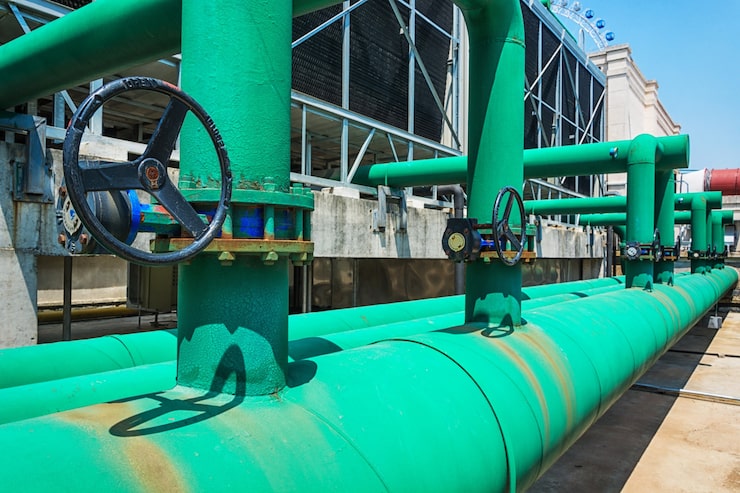When it comes to installing or upgrading a home or commercial plumbing system, one of the most frequently asked questions is: Is PVC piping good for drinking water? With a wide range of piping materials available today, homeowners, builders, and facility managers want assurance that their chosen option is not only durable and cost-effective but also safe for delivering potable water. PVC, or polyvinyl chloride, is a popular material used for various plumbing applications, but its suitability for drinking water systems is a subject of ongoing interest and occasional concern.

To answer this question comprehensively, it's important to explore the material's composition, health safety standards, regulatory approvals, performance in water delivery systems, and long-term implications.
PVC is a synthetic plastic polymer known for its light weight, low cost, and resistance to corrosion. It has been widely used in construction for decades, particularly in drain, waste, and vent systems. More recently, its use has extended to cold water delivery, thanks to improvements in manufacturing and growing acceptance by regulatory agencies. However, PVC is not suitable for hot water delivery, as high temperatures can cause the material to warp or degrade.
In terms of health safety, drinking water standards are highly regulated, particularly in countries like the United States, Canada, Australia, and across the European Union. PVC piping that is labeled as "NSF-61 certified" or "NSF-PW" (Potable Water) has been tested and approved by the NSF (National Sanitation Foundation) for contact with drinking water. These certifications confirm that the pipe does not leach harmful contaminants into the water at levels considered dangerous for human health.
It's important to distinguish between regular PVC and CPVC (chlorinated polyvinyl chloride). While both are made from vinyl chloride monomers, CPVC undergoes an additional chlorination process that allows it to withstand higher temperatures. CPVC is often preferred for hot water systems, while standard PVC is limited to cold water applications. For drinking water specifically, cold water PVC systems are often sufficient, provided the piping is certified and installed according to local plumbing codes.
Concerns about PVC piping often stem from its chemical makeup. PVC contains additives such as plasticizers, stabilizers, and sometimes lead-based compounds (in older piping systems). These additives can potentially migrate into water under certain conditions. However, modern manufacturing standards have dramatically reduced the use of harmful additives. Lead-free PVC pipes are now the norm in drinking water systems, and reputable manufacturers comply with rigorous safety protocols.
From a performance perspective, PVC piping offers several benefits that make it attractive for water delivery. It is immune to rust and corrosion, which is a significant advantage over metal pipes like galvanized steel or iron. This means PVC won’t introduce metallic tastes or discoloration into drinking water. It also maintains consistent water pressure and flow rates, thanks to its smooth interior walls that resist mineral buildup.
PVC is also easy to install and relatively inexpensive compared to other options like copper or PEX. Its light weight reduces labor costs, and it can be joined using simple solvent welding techniques, which create watertight seals without the need for complex fittings. For municipal water supplies and home plumbing alike, this ease of installation can result in faster project completion and lower overall costs.
However, PVC does have limitations. It is not recommended for use in areas exposed to direct sunlight over long periods, as UV radiation can degrade the material over time unless the piping is UV-resistant or properly shielded. It is also rigid, which limits its use in tight spaces or systems requiring flexibility, such as in seismic regions or complex building layouts.
Another factor to consider is temperature sensitivity. PVC is not suitable for water above 140°F (60°C). If hot water flows through a standard PVC pipe, it may soften or even deform the pipe, potentially leading to system failure or contamination. For applications requiring both hot and cold water delivery, CPVC or other materials like PEX are more appropriate.
Long-term durability is another concern. While PVC pipes can last decades when properly installed and maintained, they may become brittle over time, especially when exposed to extreme cold or chemical agents. In freezing climates, water expansion can cause PVC to crack unless insulation measures are taken.
From a sustainability standpoint, PVC is a mixed bag. On one hand, its long lifespan reduces the frequency of replacements, which contributes to environmental efficiency. On the other hand, the production and disposal of PVC raise environmental concerns due to the use of chlorine and potential release of toxic compounds. However, many manufacturers are investing in cleaner production processes and recyclable piping systems.
So, is PVC piping good for drinking water? The answer is yes—provided it is certified for potable use, installed correctly, and used in appropriate temperature conditions. Modern PVC piping meets or exceeds safety standards for drinking water in many countries and offers practical advantages in terms of cost, durability, and ease of use. However, users should be aware of its limitations and choose PVC only for cold water systems, not for hot water or outdoor applications without proper protection.
For homeowners, builders, or commercial operators, the key to safe use of PVC for drinking water lies in selecting certified, lead-free products from reputable brands and ensuring compliance with local plumbing codes. Consulting with a licensed plumber or water quality expert can provide additional assurance.
In conclusion, PVC piping is a viable and safe option for delivering cold drinking water, as long as it is appropriately certified and used within its design limitations. It offers a cost-effective, low-maintenance solution that aligns with modern plumbing needs and public health standards. As with any building material, informed selection and professional installation are critical to ensuring long-term safety and performance.


